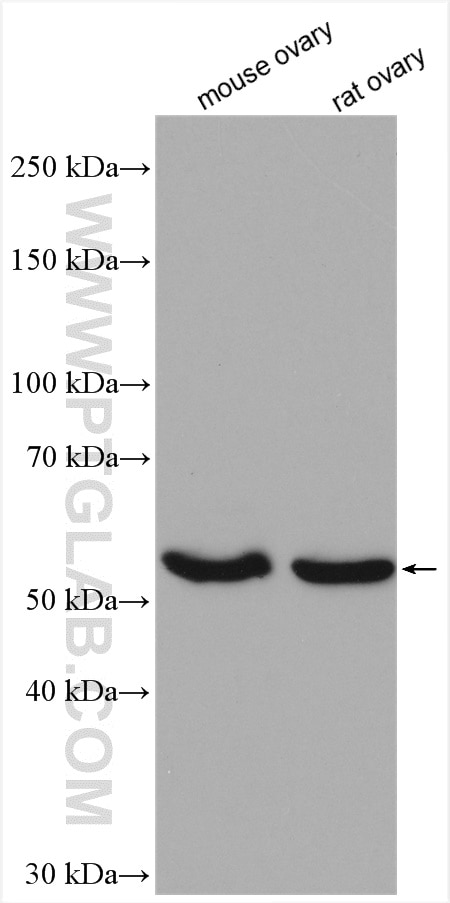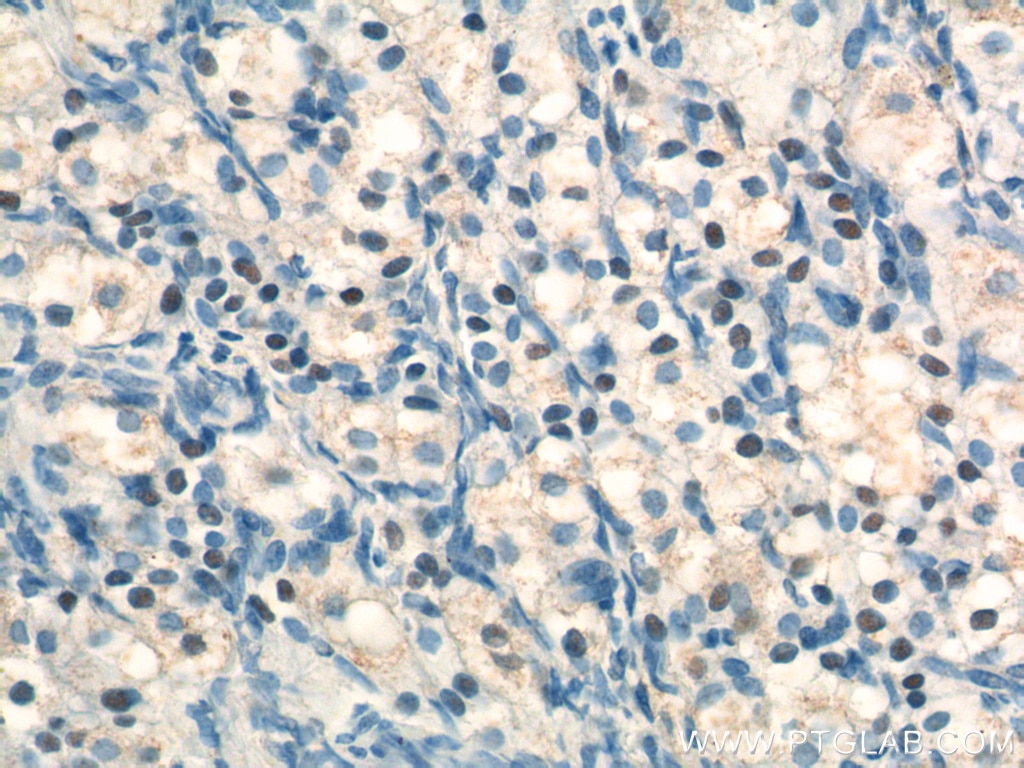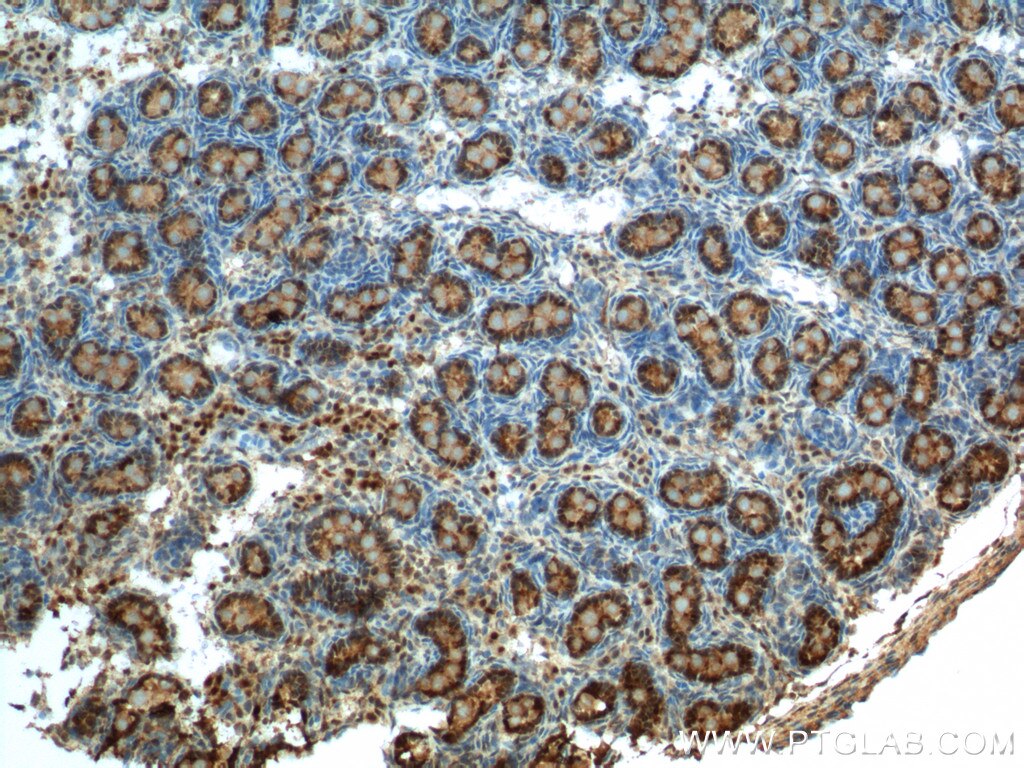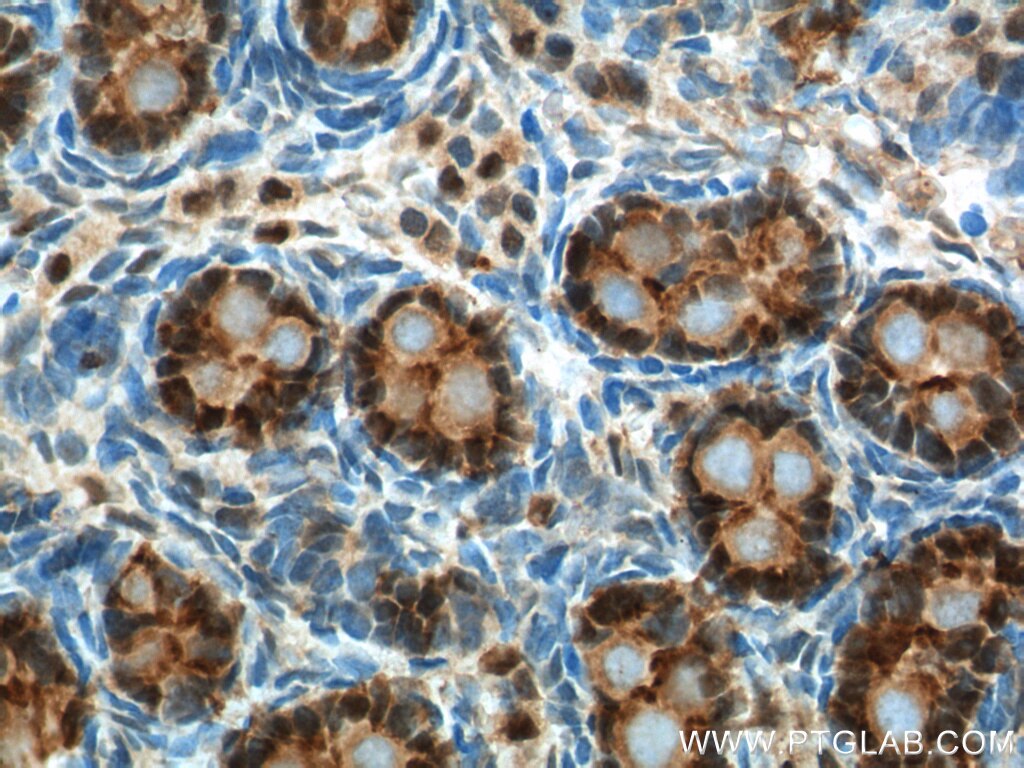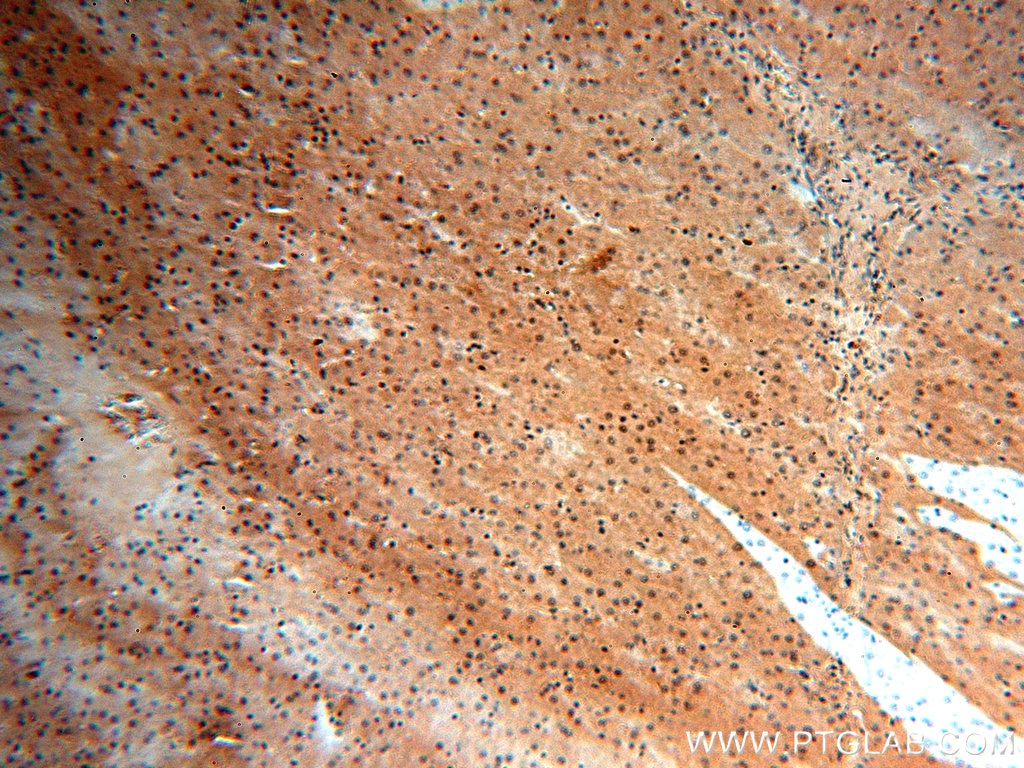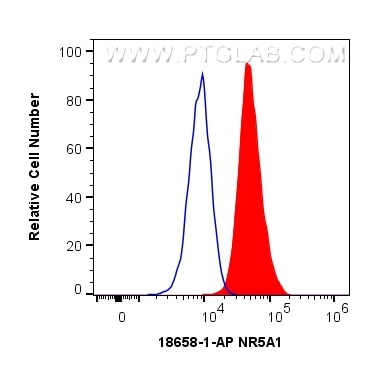Anticorps Polyclonal de lapin anti-NR5A1
NR5A1 Polyclonal Antibody for WB, IHC, FC (Intra), IP, ELISA
Hôte / Isotype
Lapin / IgG
Réactivité testée
Humain, rat, souris et plus (3)
Applications
WB, IHC, IF, FC (Intra), IP, ChIP, ELISA
Conjugaison
Non conjugué
N° de cat : 18658-1-AP
Synonymes
Galerie de données de validation
Applications testées
| Résultats positifs en WB | tissu ovarien de souris, tissu ovarien de rat |
| Résultats positifs en IP | cellules A2780 |
| Résultats positifs en IHC | tissu ovarien humain, tissu hépatique humain, tissu testiculaire de rat il est suggéré de démasquer l'antigène avec un tampon de TE buffer pH 9.0; (*) À défaut, 'le démasquage de l'antigène peut être 'effectué avec un tampon citrate pH 6,0. |
| Résultats positifs en FC (Intra) | cellules HepG2, |
Dilution recommandée
| Application | Dilution |
|---|---|
| Western Blot (WB) | WB : 1:500-1:1000 |
| Immunoprécipitation (IP) | IP : 0.5-4.0 ug for 1.0-3.0 mg of total protein lysate |
| Immunohistochimie (IHC) | IHC : 1:50-1:500 |
| Flow Cytometry (FC) (INTRA) | FC (INTRA) : 0.40 ug per 10^6 cells in a 100 µl suspension |
| It is recommended that this reagent should be titrated in each testing system to obtain optimal results. | |
| Sample-dependent, check data in validation data gallery | |
Applications publiées
| WB | See 9 publications below |
| IHC | See 5 publications below |
| IF | See 8 publications below |
| IP | See 1 publications below |
| ChIP | See 1 publications below |
Informations sur le produit
18658-1-AP cible NR5A1 dans les applications de WB, IHC, IF, FC (Intra), IP, ChIP, ELISA et montre une réactivité avec des échantillons Humain, rat, souris
| Réactivité | Humain, rat, souris |
| Réactivité citée | rat, Chèvre, Humain, porc, souris, Ondatra zibethicus |
| Hôte / Isotype | Lapin / IgG |
| Clonalité | Polyclonal |
| Type | Anticorps |
| Immunogène | NR5A1 Protéine recombinante Ag13252 |
| Nom complet | nuclear receptor subfamily 5, group A, member 1 |
| Masse moléculaire calculée | 52 kDa |
| Poids moléculaire observé | 52 kDa |
| Numéro d’acquisition GenBank | BC032501 |
| Symbole du gène | NR5A1 |
| Identification du gène (NCBI) | 2516 |
| Conjugaison | Non conjugué |
| Forme | Liquide |
| Méthode de purification | Purification par affinité contre l'antigène |
| Tampon de stockage | PBS with 0.02% sodium azide and 50% glycerol |
| Conditions de stockage | Stocker à -20°C. Stable pendant un an après l'expédition. L'aliquotage n'est pas nécessaire pour le stockage à -20oC Les 20ul contiennent 0,1% de BSA. |
Informations générales
Steroidogenic factor-1 (SF-1,STF-1), also known as NR5A1, regulates multiple genes involved in the adrenal and gonadal development and in the biosynthesis of a variety of hormones, including adrenal and gonadal steroids, anti-Mullerian hormone (AMH), and gonadotropins. SF-1 belongs to the fushi tarazu factor-1 (FTZ-F1) subfamily of orphan nuclear receptors. Initially identified as a tissue-specific transcriptional regulator of cytochrome P450 steroid hydroxylases, research studies of both global and tissue-specific knockout mice have demonstrated that SF-1 is required for the development of adrenal glands, gonads, ventromedial hypothalamus, and for the proper functioning of pituitary gonadotropes. Indeed, humans with mutations that render SF-1 transcriptionally inactive can present with testicular failure, ovarian failure, and adrenal insufficiency. Furthermore, dysregulation of SF-1 has been linked to diseases such as endometriosis and adrenocortical carcinoma.Like other nuclear hormone receptors, SF-1 has a modular domain structure composed of an N-terminal zinc finger DNA-binding domain, a ligand-binding domain, a C-terminal AF-2 activation domain, and a hinge region with AF-1-like activation activity. SF-1 also contains a fushi tarazu factor 1 box, which functions as an accessory DNA binding domain. SF-1 is primarily phosphorylated at Ser203, which is thought to enhance its transcriptional activity by promoting complex formation with transcriptional cofactors. In addition to phosphorylation at Ser203, SF-1 is subject to SUMO conjugation and acetylation at ε-amino groups of target lysine residues. Whereas SUMOylation represses SF-1 function, acetylation enhances its transcriptional activity.In the adult ovary, SF-1 localizes to theca/interstitial cells.
Protocole
| Product Specific Protocols | |
|---|---|
| WB protocol for NR5A1 antibody 18658-1-AP | Download protocol |
| IHC protocol for NR5A1 antibody 18658-1-AP | Download protocol |
| IP protocol for NR5A1 antibody 18658-1-AP | Download protocol |
| Standard Protocols | |
|---|---|
| Click here to view our Standard Protocols |
Publications
| Species | Application | Title |
|---|---|---|
J Hazard Mater GRP78/IRE1 and cGAS/STING pathway crosstalk through CHOP facilitates iodoacetic acid-mediated testosterone decline | ||
Mol Cell Endocrinol Pde8b haploinsufficiency in mice is associated with modest adrenal defects, impaired steroidogenesis, and male infertility, unaltered by concurrent PKA or Wnt activation. | ||
J Steroid Biochem Mol Biol Seasonal expressions of SF-1, StAR and P450scc in the scent glands of the muskrats (Ondatra zibethicus). | ||
